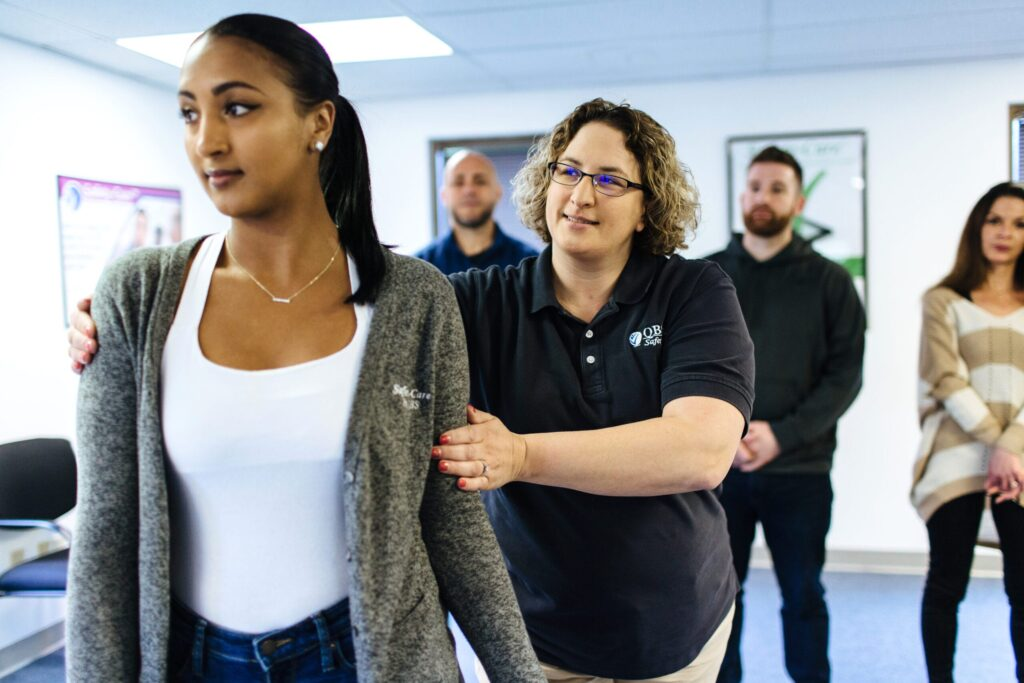Arkansas House Bill 1610 – Use of Restraints in Schools
Upon the adoption of House Bill 1610, Arkansas schools have been given new guidelines regarding the use of restraint. Below is a summary of the effective parts of HB 1610 along with guidance on how Safety-Care can be used to meet these requirements.
.jpg)
.png?width=88&height=95&name=Group%20137%20(5).png)


How to Implement Safety-Care?
1. Register for a Safety-Care Trainer class or call us to request a closed session for your organization. We regularly conduct classes in all 50 states and Canada.
2. Complete your class to become a certified Safety-Care Trainer for your organization. We bring you to fluency using an errorless teaching methodology.
3. You train and certify your staff in Safety-Care’s effective techniques.
4. Our Master Trainers are available by phone, email, or video to help your organization with any questions or concerns while using or implementing Safety-Care.

Legal Requirements
|
Summary: Effective: April 30, 2021 Last Updated: December, 2024 Upon the adoption of House Bill 1610, Arkansas schools have been given new guidelines regarding the use of restraint. Below is a summary of the effective parts of HB 1610 along with guidance on how Safety-Care can be used to meet these requirements. How Safety-Care aligns: Numerous education organizations throughout the United States and Canada rely upon QBS and our Safety-Care training to provide their staff members with the training they need to help maintain a safe and healthy environment. Safety-Care provides a comprehensive, supportive approach to incident prevention, de-escalation, and management. Your Staff will learn practical strategies for helping students that use evidence-based practices consistent with PBIS (Positive Behavior Interventions and Supports) and ABA (Applied Behavior Analysis). |
|
AR ST § 6–18–2205. (b) (1) School personnel shall use the least restrictive technique necessary to end imminent danger or serious physical harm to a student and others. (2) The ability of a student to communicate shall not be restricted unless the use of a less restrictive technique by school personnel will not prevent imminent danger of serious physical harm to the student or others. |
|
(c) When using a crisis intervention procedure or technique, school personnel shall consider the health and safety of a student, including without limitation whether the student has an existing medical condition that makes the use of physical restraint inadvisable. |
|
(d) Supine restraint shall not be used unless: (1) The school personnel administering the supine restraint has been trained by a person who is certified by a training program that meets the criteria specified in AR ST § 6–18–2209; and |
|
(e) If physical restraint is used on a student, the student shall be continuously and visually observed and monitored while he or she is under physical restraint. |
|
(f) When using physical restraint on a student, school personnel shall: (1) Use the safest method available and appropriate to the situation; |
|
(g) Physical restraint of a student shall: (1) Be used for a limited period of time; and (A) When imminent danger or serious physical harm to the student or others dissipates or a medical condition occurs that puts the student at risk of harm; (i) To punish or discipline the student; How Safety-Care aligns: Safety-Care promotes the use of de-escalation prior to the use of any physical management. Physical management techniques are designed to ensure the safety of all participants and are only to be used until the situation has de-escalated. Safety-Care can be designed and taught to match local requirements regarding restraint but always focuses on the least restrictive and safest methods. All physical management techniques are role-played by trainees to ensure that they fully grasp the need for minimum restriction and full safety of all participants. Our Master Trainers verify each trainees use of these techniques in role-play, further ensuring their safe use. Each trainee must prove mastery of proper technique use before they can be certified in Safety-Care. Safety-Care prohibits the use of chemical restraints. |
|
(h) School personnel shall not use the following on a student: (1) Mechanical restraint; (A) Life-threatening; or (5) Prone restraint or other restraint that restricts the breathing of a student. A program used by a school district to train school personnel on the use of physical restraint on a student shall: (1) Teach evidence-based techniques that are shown to be effective in the prevention and safe use of physical restraint; (A) Guidelines on understanding when there is an imminent danger of serious physical harm to a student or others; (3) Be competency-based and include measurable learning objectives, measurable testing using written documentation of behavior and observation of behavior on the objectives of the testing, and measurable methods to determine passing or failing the program; |
Why Safety-Care?
Benefits & Differentiators
In addition to Safety-Care being highly cost-effective, you get:

Skills to effectively prevent, minimize, & manage behavioral challenges with dignity, safety, & the possibility of change

Decreases in staff and patient injuries and reduction in restraint & seclusion time

Instructional procedures based on decades of evidence-based research & compatible with ABA, PBIS & reinforcement-based environments

Customizable program for your setting, staff & clientele, with a strong focus on preventative via non-intrusive, replacement behaviors

Extremely rigorous standards grounded in errorless teaching methodology

Small, intimate class sizes backed by unlimited support & resources
How Is Safety-Care So Effective?
A Genuine Focus on Implementing & Managing Positive Behavioral Skills
Proactive, environmental management recommendations
Understanding of evocative effects of staff behavior
In-depth analysis of antecedents and proactive antecedent interventions
Evidence-based reinforcement procedures
Required competency in de-escalation skills
Humane, non-invasive touch and QBS Check™ strategies
Evidence-based teaching procedures
Applicable to a wide array of settings, conditions & challenging behavior





